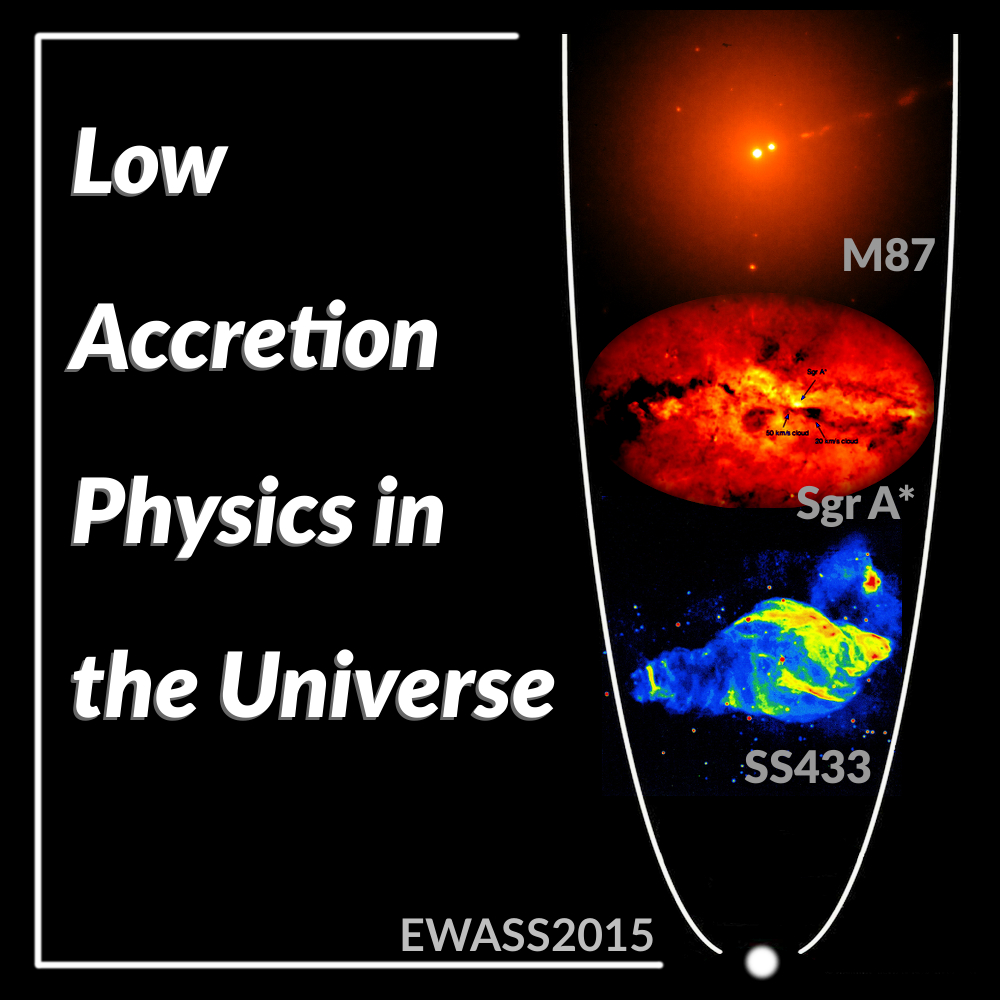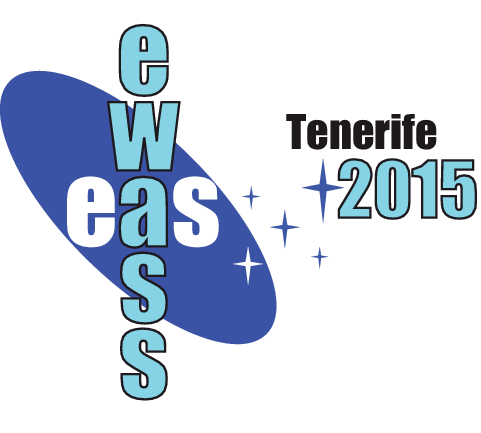Special Session Sp14
25 June 2015
Low-accretion physics in the Universe
Aims and scope
 This Special Session on low-accretion physics will convene two major communities that address this topic, each focusing on the extreme sides of the black hole mass distribution: X-ray binaries on one hand and active galactic nuclei, including Sgr A*, on the other.
This Special Session on low-accretion physics will convene two major communities that address this topic, each focusing on the extreme sides of the black hole mass distribution: X-ray binaries on one hand and active galactic nuclei, including Sgr A*, on the other.
The low accretion state is the characteristic mode of supermassive low-luminosity galactic centres, including Sgr A*, and is the often state of Galactic low black hole mass sources. A unification scheme arises thus naturally for low accretion systems. The fundamental plane of black hole activity describes how different black holes, across ten orders of magnitude in mass, regulate their radiative and mechanical luminosity using a common mechanism: the disk-jet coupling. From X-ray binaries to powerful radio galaxies, including Srg A* in the Galactic centre, all share a common set of properties: variability, similar continuum spectra and jet activity among others. Accordingly, the interpretation of the accretion physics given by both communities is becoming largely unified, sharing similar models and observational objectives. This Special Session aims to join both communities in an effort to probe these unifying mechanism and processes across the whole range of masses.
Image caption. Top: M87 and its jet observed in the near-infrared K-band by NaCo/VLT adaptive optics (M.A. Prieto). This elliptical galaxy hosts a 109 solar mass black hole. Middle: Temperature map of the Galactic center, hosting a 106 solar mass black hole, obtained with the Herschel satellite (Molinari et al. 2011). Bottom: VLA radio emission of the W50 nebula surrounding the stellar-mass black hole and relativistic jets of SS433 (Dubner et al. 1998).
Programme
- Parallel lives: AGN and X-ray binaries
- Modeling low accretion: Why disc + jet
- Low-luminosity active galactic nuclei
- Sgr A*
TALK LENGTH
Contributed talks: 12 min + 3 min questions
Review talks: 25 min + 5 min questions
Invited speakers
- Elmar Körding (Radboud Universiteit Nijmegen)
- Sera Markoff (University of Amsterdam)
- M. Almudena Prieto (Instituto de Astrofísica de Canarias - IAC, Spain)
- Stefan Gillessen (Max Planck Institute for Extraterrestrial Physics)
Scientific organisers
- Heino Falcke (Radboud Universiteit Nijmegen, The Netherlands)
- Rob Fender (University of Oxford, United Kingdom)
- Juan A. Fernandez Ontiveros (Istituto di Astrofisica e Planetologia Spaziali - INAF-IAPS, Italy)
- Mar Mezcua (Harvard-Smithsonian Center for Astrophysics - CfA, USA)
Contact
Mar Mezcua: mar.mezcua @ cfa.harvard.edu
Updated on Sun Jun 21 19:16:18 CEST 2015
|

